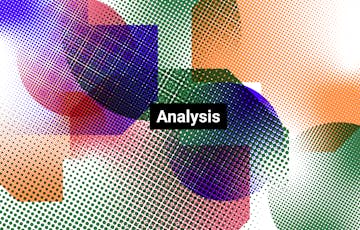From politics to the pandemic to war, our understanding about global issues and our ability to make good decisions depend on our access to accurate, quality information. And this access is becoming increasingly pinched by the proliferation of propaganda. Never before have so many propagandists had such easy access to such large audiences. That’s both alarming and dangerous. But if we can identify propagandists and their work, we can take steps to make them less effective.
What is propaganda?
To understand what a propagandist is, it’s necessary to first look at propaganda. In its widest definition, propaganda is information that is shared for the purpose of persuading its audience to support an idea, cause, political party or other objective. So a simple, unadulterated image or even a song could be used as propaganda.
However the meaning of the term propaganda has evolved to refer to very manipulated or objectively false information intended to stoke fear and anxiety in people, and thus shepherd them toward supporting the underlying cause. This is especially true of wartime propaganda and political propaganda.
What is a propagandist?
Propagandists are the people or groups responsible for either creating or disseminating propaganda. Often it one in the same, but not always—and there are some limits. Let’s say there’s an authoritarian government that wants to create fear and anxiety within the population by making them afraid of migrants. It develops the narrative that “others” threaten the traditions and values of the country, threaten the security and way of life of people. The government hires a cartoonist to create cartoons that promote this message. Then it has the country’s biggest newspaper, which it controls, disseminate the cartoon. This story has three propagandists so far: the cartoonist; the government; and the newspapermen.
But what about Uncle Bob? As you scrolled your social media over morning coffee, you saw that he also shared the cartoon on his Facebook and Twitter pages. Is Uncle Bob also a propagandist? After all, he shared it intentionally. In this, we can give Uncle Bob a pass. Propagandists not only create or share their information intentionally, but they also know its propaganda specifically designed to further an aim.
Who were the most famous propagandists in history?
There have been many propagandists throughout time, but there are notable examples from modern history. Perhaps the most famous is Joseph Goebbels, who served as Nazi Germany’s Reich Minister of Propaganda from 1933 to 1945. Goebbels promoted Nazi aims, including through his own public speeches and in crafting many of Hitler’s speeches, and by controlling the newspapers, radio and other media of the Third Reich. Goebbels is not only a prominent example of a propagandist, but also of how propaganda can be used to further the very worst of aims.
Trịnh Thị Ngọ was another notable propagandist from recent history. A Vietnamese radio personality during the Vietnam War, she became known as “Hanoi Hannah” among American soldiers, who listened to her daily rants against the war and her direct messages to the soldiers that they were being lied to about the state of the war. Her goal was not to turn US soldiers against each other, but to lower morale and make them less supportive of their own war effort.
Does propaganda still exist? Examples from the modern world
Propaganda absolutely still exists. In fact, there may be more propaganda, being more widely spread, than ever before. There are many reasons for this, but a few stand out. The internet allows us to easily share both our own information and that of others more easily and to more people. Government capture of media networks has turned national news channels with the widest reach into mouthpieces for the state. And the business model of online platforms incentivizes the sharing of provocative and often false information.
We are also seeing the long-term effects of propaganda within the EU, especially in places like Hungary. Viktor Orban’s government or friends control 80% of the media in Hungary, and completely control public service media, turning it into a propaganda machine for the Orban government. A similar situation exists in Poland and Slovenia, where the governments have targeted critical media outlets and brought others under their control.
There are a few current examples of propaganda that illustrate both its rise and its power. Following its invasion of Ukraine, the Russian government – never shy to bend the truth – stepped up its propaganda efforts to distort the war and shore up support for it at home. The media company RT, widely seen as an arm of the government, was taken off EU airwaves.
The coronavirus pandemic was a boon to propagandists. Propaganda fueled protests against restrictions, the wearing of masks, and the vaccine. But there was also propaganda in its most basic and less sinister form, evoking the hardships and triumphs of past generations to inspire responsible behavior.
A look at the business practices of online media giants also serves as a lesson in modern propaganda. They have famously done very little to police disinformation, hate speech, and propaganda on their platforms. Doing so would not be good business for them. The more views, clicks, and shares there are, the more money there is for them. Sensationalist reporting, disinformation and propaganda simply perform the best, and especially so when internet users are pushed into ‘echo bubbles’ or like-minded people.
What tools does modern propaganda use?
Much like their predecessors, modern propagandists make use of certain tools to catch attention and move people towards a certain opinion. The most basic tool is the allegation, which serves as the foundation. These often have no basis in fact and are in no way empirical. Oft-seen examples of this include the idea that migrants will take all the local jobs or bankrupt the country (or even both, somehow), or that LGBTQI+ people threaten a country’s “traditional values” or the concept of family (a strategy used by Orban’s Fidesz party to gain re-election).
Another important tool propagandists use is to appeal to people’s wants or fears. This may be done by using slogans, another important tool. Propaganda around the abortion debate in the US, for example, pushes “pro-life” as a slogan for people opposed to it. The other side appeals to the desire to have control over one’s own body and personal choices – “pro-choice.”
The goals of modern propagandists, how they behave, and how to spot them
The overarching goals of propagandists have changed very little over time. They are still attempting to shift public opinion toward a position they favor, to advance a cause, to broaden support. What changes most, of course, is the underlying cause. And propaganda may take many more forms than it once did, thanks to technological advancement.
Perhaps the most striking change in propaganda over time is in propagandists’ behavior. The digitalization of our world has allowed for the mass harvesting of people’s personal information. Data points about each one of us, including our gender, location, and political leanings can be used to target us with propaganda that we are predisposed to agree with or find compelling. Never before have propagandists been able to so precisely target people with messages so finely tuned to their preferences and so carefully tailored to incite a reaction.
This makes spotting propaganda that much harder. It’s subtle, clever, and often disguised as legitimate content. This can be in one-off videos made for social media or advertisements disguised as news articles (“sponsored content”), but it can also be true of whole media outlets. RT is dressed up as a legitimate news organization, when in fact it’s just a shill for the Kremlin.
Although they deserve due criticism, social media platforms do occasionally make it easier to spot propaganda and other forms of disinformation. Twitter’s decision to slap labels on tweets coming from Russian state-backed media is a good (albeit small) step. So too are decisions to ban or suspend people who routinely share propaganda and disinformation, including a certain US president.
A good way we can individually spot propagandists and their work is by a more critical audience. This includes not only asking ourselves if what we see makes sense, but also if there is any data to back it up, or if others we trust are also saying it. We can look at the source, see what else they’ve shared. We can talk about it with our friends and family, who may have seen different information, and be receptive to new perspectives. This makes it easier to spot propagandists and also blunts the effect propaganda can have.
How do we deal with propaganda and propagandists?
Measures to fight propaganda and remove it from public discourse must be carefully evaluated. There are, of course, serious concerns about limiting free speech and the right to information if attempts to muzzle propaganda are too heavy-handed. But it should be stressed that propaganda and disinformation – information known to be false and shared intentionally – are not free speech. Disinformation not only creates division and mistrust, it is corrosive to democracy and threatens our right to free and fair elections.
Attempts to remove propaganda from the internet and other public information channels should continue, with due consideration to fundamental rights and regular oversight. Outlets that we know to be propaganda houses do not have an inalienable right to our airwaves. And we must also reform the business models of online platforms and news organizations to remove incentives to protect and promote propaganda on their pages.
Image credits:
Stephen Monterroso
Mike Philipp
Mouaadh Tobok
Diego Gonzalez
Ajeet Mestry
/Unsplash.com



